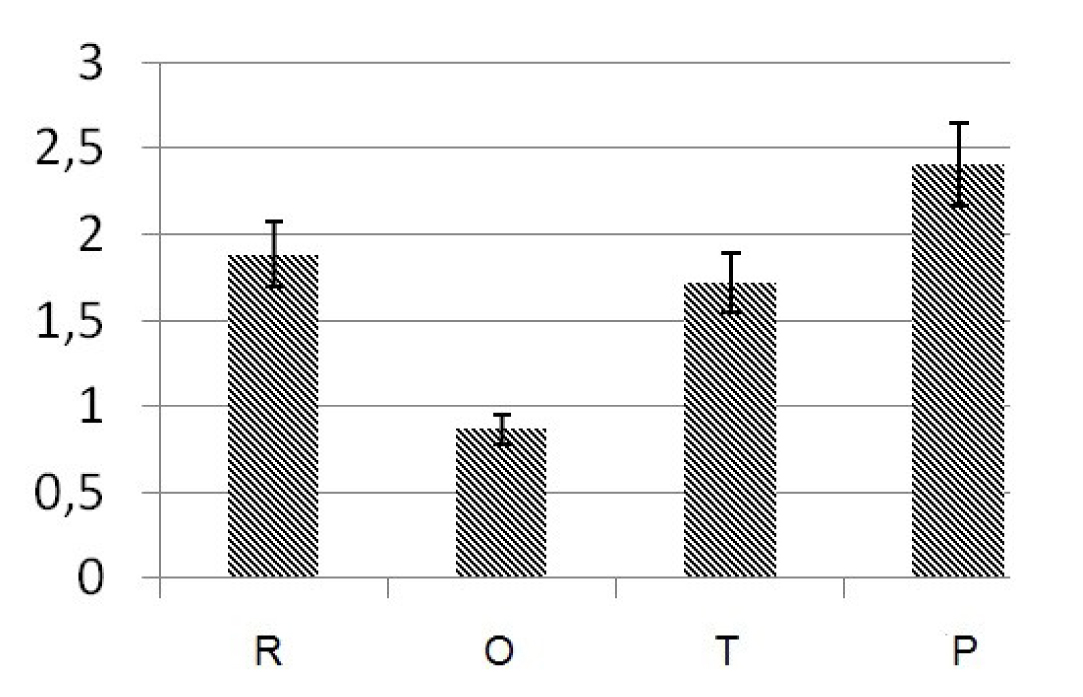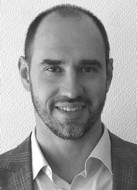Neural-network model of physical loads versus functional activity of blood neutrophils in skilled athletes in off-season
Фотографии:
ˑ:
PhD K.P. Bazarin1
Dr.Med., Professor A.A. Savchenko1, 2
1Research Institute for Medical Problems in the North, Krasnoyarsk
2Siberian Federal University, Krasnoyarsk
Keywords: neutrophils, functional activity, physical load, sport.
Introduction. High physical loads in modern sports are known to disrupt the process of adaptation. Implementation of successful adaptation processes is provided by many bodily systems, the immune one being one of them [6, 7]. In case of failure of the adaptation mechanisms, uncompensated tension develops in the immune system, which may evolve into dysimmunoreactivity and precondition a vast variety of both functional and structural (pathomorphological) manifestations of this pathology [5, 6]. As yet, a number of studies have been conducted to assess the effects of high physical loads on the athletes’ immune system. According to these studies, heavy loads suppress immunological reactivity [8].
Neutrophil granulocytes are a highly responsive link of the immune system. They are the first to mobilize in the area of inflammation, so the bodily antibacterial defense efficiency largely depends on the phagocytic activity of cells [5, 6]. Сhemiluminescent activity of neutrophil granulocytes may result in a "respiratory explosion" that occurs due to interaction of cells with objects of phagocytosis. The chemiluminescent process parameters are highly informative as indicators of the functional activity of neutrophil granulocytes. We studied the mechanisms of long-term changes in the functional activity of neutrophil granulocytes influenced by regular heavy loads [1, 2, 4], however, it is of great importance for sports medicine to develop the immune system disorders forecasting methods, as this is the only way to prevent them.
Objective of the study was to design and validate the effectiveness of neural-network models of interaction of physical load parameters with changes in the functional activity of neutrophil granulocytes in athletes.
Methods and structure of the study. Subject to the study were 155 athletes active in different sports including 96 males and 59 females of 24.34±3.54 and 23.12±2.3 years of age, respectively. The Reference Group (RG, n=101) was composed of the people free of systemic physical loads (physically inactive) including 53 males and 48 females aged 23.17±2.54 and 22.12±3.01 years, respectively. The study was approved by the local Ethics Committee, and all the subjects gave their informed consent to participate in the experiment.
The amount and intensity of physical loads were studied based on the self-control diaries kept by athletes, training and competition plans. Heart rate was measured using the sports HR monitors Polar FT1, Polar RC3 GPS. Within the limits of the total amount of annual load, we determined its structure by intensity zones. Load intensity was allocated by 4 classical zones: 1st zone - low intensity, 50% of the maximum oxygen consumption (MOC), HR - within 135 bpm; 2nd zone - moderate intensity, anaerobic threshold level. MOC increases to 50-80%, HR - 135-150 bpm; 3rd zone - high intensity, mixed aerobic-anaerobic energy supply, MOC - 80-100%, HR - below 180 bpm; 4th zone - maximum intensity. MOC approaches 100%, HR - above 180 bpm.
Given different duration and dimensionality of the cycles, in our evaluation we used a relative value expressed as a percentage ratio of the load index in each intensity zone in terms of one day of the mesocycle. The mean value was calculated as the arithmetic mean of the percentage ratios for each kind of sport.
Venous blood was sampled at the end of the competitive period. The chemiluminescent reaction mix included 40 μl of AB (IV) donor serum, 100 μl of luminol at the concentration of 10-5 M, 50 μl of inducer (in case of determination of induced chemiluminescence), 610 μl of Hanks’ no-dye solution and 250 μl of leukocyte suspension (2 MIO/ml) and was used to determine spontaneous chemiluminescence or 685 μl of Hanks’ solution and 125 μl of leukocyte suspension - for induced one. The analysis of spontaneous and induced chemiluminescence was performed using the 36-channel chemiluminescence analyzer "CL3604" (SDTB «Nauka», Krasnoyarsk) and lasted 90 min. We measured the time to the maximum (Tmax), maximum value (Imax) and curve area (S). Opsonized zymosan ("Sigma", USA) was used as the inducer of the "respiratory explosion". The increase in chemiluminescence induced by zymosan, versus spontaneous one, was estimated by the ratio Szym./Sspon defined as an activation index (AI) [3]. Neural-network simulation was carried out by means of application package Statistica 7.0 (StatSoft Inc., 2004).
Results and discussion. The activation index characterizes the functional activity of the blood neutrophils. The dynamic changes of this parameter during the annual training and competitive macrocycle are shown in Fig. 1.

Fig. 1. Activation index in athletes at different stages of annual training and competitive macrocycle versus Reference Group subjects.
Legend: R – Reference Group, O – athletes in the off-season, T – athletes at the end of the transition period, P – athletes at the end of the preparatory period.
The activation index in the athletes was found to have statistically significant differences in the studied periods of the annual macrocycle, in addition, it also differed from that in the Reference Group.
It is notable that a paradoxical blood neutrophils reaction is found in the athletes in the off-season, manifested in a decreased cell activity in response to stimulation (AI<1). The results obtained are in good agreement with the data of other researchers, who demonstrated similar values of decreasing functional activity of the blood neutrophils in the athletes affected by the competitive stress [7, 8]. Accordingly, of particular interest is the process of modeling of competitive activity.
To model the effects on the studied processes of the factors associated with sports activities, we used the method of neural network simulation. Four parameters characterizing physical loads of different intensity were used as the inputs. The output parameter was the activation index (AI), which characterizes the functional activity of the blood neutrophil granulocytes. Taking into account the sex-specific differences in the above parameters [1], we designed two models for men and women. The diagrams below (Figure 2) illustrate the correspondence of the experimental and neural-network model forecasting results.

Fig. 2. Experimental results (X axis) versus neural-network model forecasting results (Y axis) for neutrophil granulocyte AI in athletes (a - men and b - women) in off-season
The average approximation rate (Ā) for the neural-network model was estimated at 2.77% and 2.98% for the males and females, respectively. Therefore, the newly designed neural-network models were found beneficial as verified by the significant forecast rates for the athletes’ bodily systems being studied.
Conclusion. The study results demonstrated the possibility of immunological response forecasting at the stage of formation of annual individual training plans. Practical application of the results obtained will make it possible to prevent immunodeficiency in athletes.
References
- Bazarin K.P., Savchenko A.A., Aleksandrova L.I. Izmenenie funktsionalnoy aktivnosti neytrofilnykh granulotsitov krovi u kvalifitsirovannykh sportsmenov [Change in functioning of blood neutrophils in skilled athletes]. Byulleten Vostochno-Sibirskogo nauchnogo tsentra SO RAMN, 2013, no. 6, pp. 16-18.
- Bazarin K.P., Savchenko A.A. Osobennosti metabolicheskoy aktivnosti neytrofilnykh granulotsitov u sportsmenov v dinamike trenirovochnogo tsikla [Features of metabolic activity of neutrophils in athletes within training cycle]. Sportivnaya meditsina: nauka i praktika, 2013, no. 1 (10), pp. 246-247.
- Savchenko A.A. Opredelenie aktivnosti NAD(P)-zavisimykh degidrogenaz v neytrofilnykh granulotsitakh biolyuminestsentnym metodom [Bioluminescent method to estimate activity of NAD(P)-dependent dehydrogenases in neutrophils]. Byulleten eksperimentalnoy biologii i meditsiny, 2015, no. 5, pp. 656–660.
- Savchenko A.A., Bazarin K.P. Sostoyanie aktivnosti NAD- i NADF-zavisimykh degidrogenaz v neytrofilnykh granulotsitakh u sportsmenov v dinamike trenirovochnogo tsikla [Activity of NAD- and NADP-dependent dehydrogenases in neutrophils in athletes within training cycle]. Zhurnal Sibirskogo federalnogo universiteta. Biologiya, 2013, no. 6, pp. 151–162.
- Savchenko A.A., Borisov A.G. Osnovy klinicheskoy immunometabolomiki [Fundamentals of clinical immunometabolomics]. Novosibirsk: Nauka publ., 2012, 263 p.
- Savchenko A.A., Smirnova S.V., Borisov A.G. Soderzhanie ATF i aktivnost NAD(F)-zavisimykh degidrogenaz v limfotsitakh pri immunodefitsit-assotsiirovannykh zabolevaniyakh u prishlykh zhiteley Evenkii [ATP content and activity of NAD(P)-dependent dehydrogenases in lymphocytes in immunodeficiency-associated diseases in foreign residents of Evenkiya]. Byulleten SO RAMN, 2010, no. 3, pp. 33–38.
Corresponding author: kpbazarin@gmail.com
Abstract
High physical loads in modern sports are known to increase the exposure to immune system disorders. Subject to the study were neutrophil granulocytes for the reason that the microbe immunity largely depends on the phagocytic activity. Сhemiluminescent activity of neutrophil granulocytes may result in a ‘respiratory explosion’ that occurs due to interaction of cells with objects of phagocytosis. Сhemiluminescent process parameters are highly informative as indicators of functional activity of neutrophil granulocytes.
Modern sport medicine gives a high priority to the ways to forecast potential immune system disorders. For this purpose we designed the neural network model of physical loads versus functional activity of blood neutrophils. Subject to the study were 155 athletes active in different sports including 96 males and 59 females of 24.34±3.54 and 23.12±2.3 years of age, respectively. Reference Group (RG, n=101) was composed of the people not engaged in systemic physical loads (physically inactive) including 53 males and 48 females aged 23.17±2.54 and 22.12±3.01 years, respectively. Average approximation rate (Ā) for the neural-network model was estimated at 2.77% and 2.98% for the males and females, respectively. Therefore, the newly designed neural-network models were found beneficial as verified by the meaningful forecast rates for the blood neutrophil functional activity in athletes.


